For optimal viewing experience, it is recommended to access this page on a computer or large tablet.
BELLRINGERS
ESS2: Earth's Systems
MS ESS2-2
How geoscience processes have changed Earth's surface at varying time and spatial scale
- Why do you think the Appalachian Mountains are much smoother than the Rocky Mountains?
- How does the surface of the Earth look different as a result of the Mountain Saint Helens eruption?
- How could glaciers be responsible for the formation of fjords like this one in Norway?
- Since their formation, how do you think these Hawaiian mountains have changed?
- What do you think is causing these plates in Iceland to move apart?
- Why do you think the sand on this beach in Iceland is black?
- Explain why volcanoes erupt.
- Explain where lava comes from and why it's so hot.
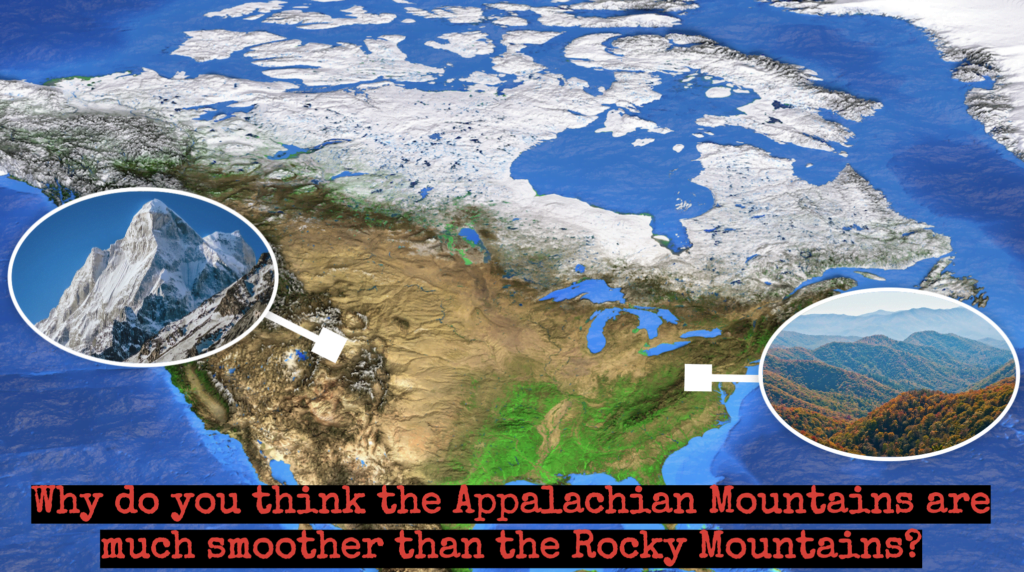
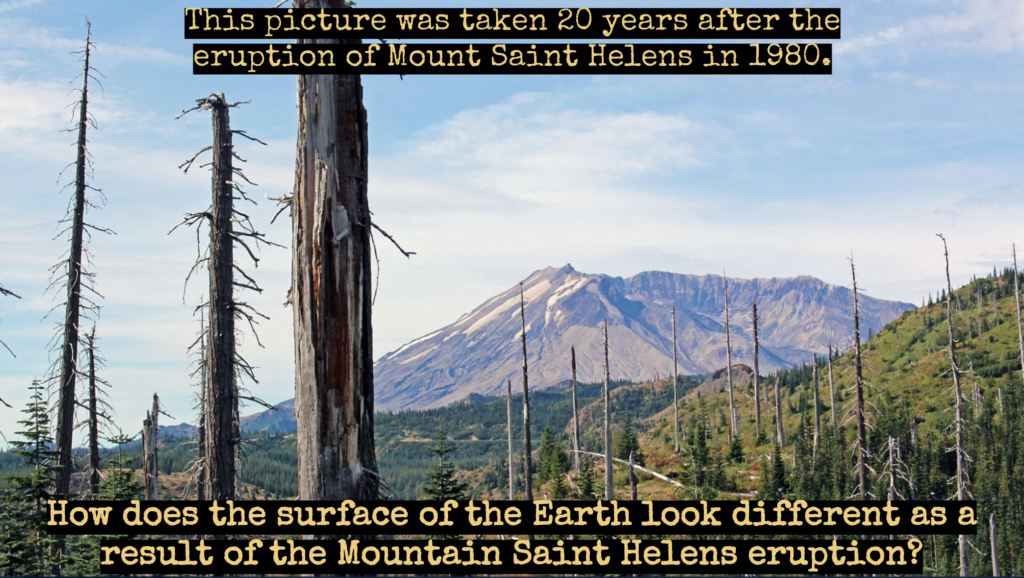
How does the surface of the Earth look different as a result of the Mount Saint Helens eruption?
Common Misconceptions
- The Earth’s surface has always looked the same.
- Plate tectonics is a recent phenomenon.
- Mountains are permanent
- Volcanoes only exist on land.
- All volcanoes are alike.
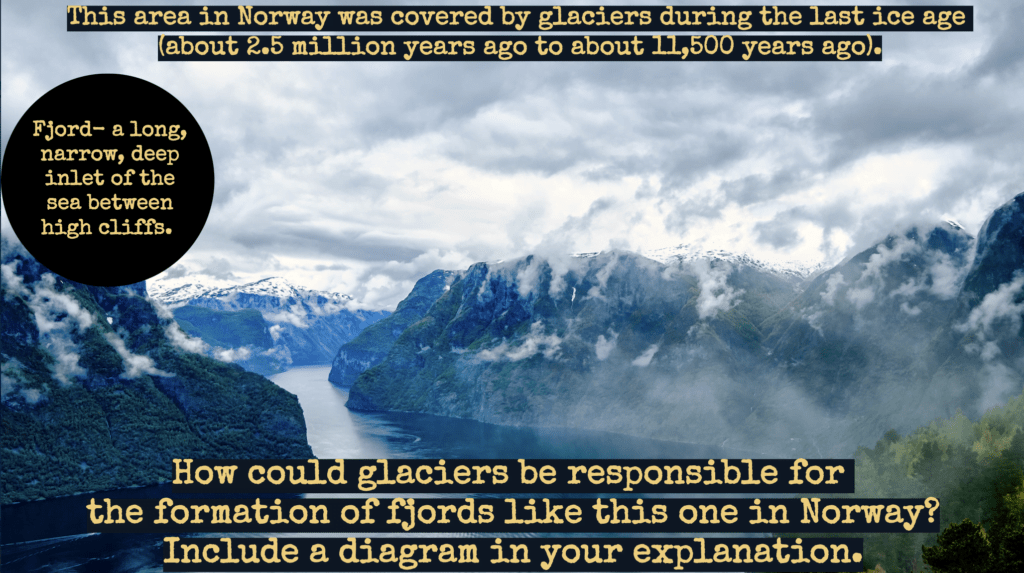
How could glaices be responsible for the formation of fjords like this one in Norway. Include a diagram in your explanation.
Note: a fjord is a long, narrow deep inlet of the sea between high cliffs.
Common Misconceptions
- The surface of the Earth does not change much.
Some common misconceptions about Fjords-
Fjords are found only in Norway: Fjords are actually found in many parts of the world, including Norway, Chile, New Zealand, Canada, Alaska, and Greenland.
Fjords are only found in cold climates: While many fjords are found in cold climates, such as Norway and Greenland, some are found in more temperate regions such as New Zealand and Chile.
Fjords are formed by glaciers: Fjords are actually formed by a process known as glacial erosion. As a glacier moves through a valley, it cuts a steep-sided, U-shaped depression in the rock. When the glacier retreats, sea or river water fills the depression, creating a fjord.
Fjords are only found along the coast: While the majority of fjords are located along the coast, some are also found inland, such as Sognefjorden in Norway, which is located deep inland.
Fjords are always deep: Fjords can vary in depth, some are shallow and some are very deep. The depth of a fjord is determined by how far the glacier cut into the valley floor during the last ice age.
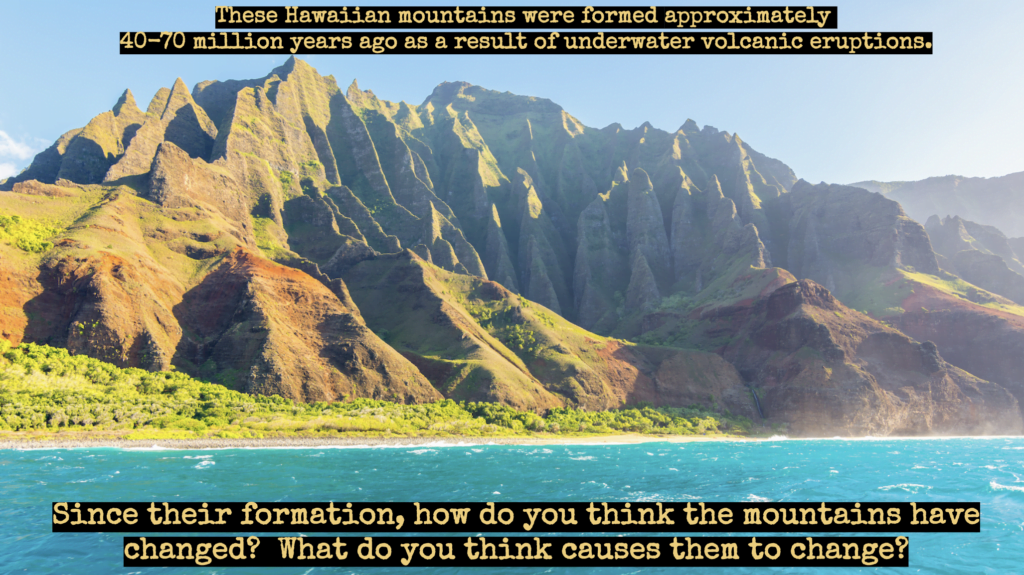
Since their formation, how do you think the mountains have changed? What doyou think causes them to change?
Common Misconceptions
- Volcanoes only exist on land
- Hawaii was formed by a single volcanic eruption
- Hawaii is a single landmass
- Hawaii was formed by a meteor impact
- Hawaii’s volcanoes are extinct
- The Hawaiian islands were always tropical
- The surface of the Earth does not change much.
Additional Resources
Some common misconceptions about Hawaii-
Hawaii was formed by a single volcanic eruption: Hawaii is actually a volcanic island chain that was formed by a process known as “hotspot volcanism.” This process occurs when a plume of hot magma rises from deep within the Earth’s mantle and creates a volcano on the surface. Over time, the volcano becomes extinct and a new one forms as the tectonic plate moves over the hotspot, creating a chain of volcanoes.
Hawaii is a single landmass: Hawaii is actually made up of several islands, each with its own unique geological history. The eight main islands are: Hawaii (also known as the Big Island), Maui, Kahoolawe, Lanai, Molokai, Oahu, Kauai, and Niihau.
Hawaii was formed by a meteor impact: While there have been some meteor impacts on Hawaii, the island chain was not formed by one. The volcanoes on Hawaii are formed by the movement of the Pacific plate over a hot spot in the Earth’s mantle.
Hawaii’s volcanoes are extinct: While some of the volcanoes on Hawaii are considered extinct, others are still active. For example, Kilauea on the island of Hawaii has been continuously erupting since 1983.
The Hawaiian islands were always tropical: The Hawaiian islands were not always tropical, it was formed in a zone of cool water, and as the volcano emerged, the volcanic island gradually moved towards the equator. It gradually became more tropical over time as the island moved closer to the equator.
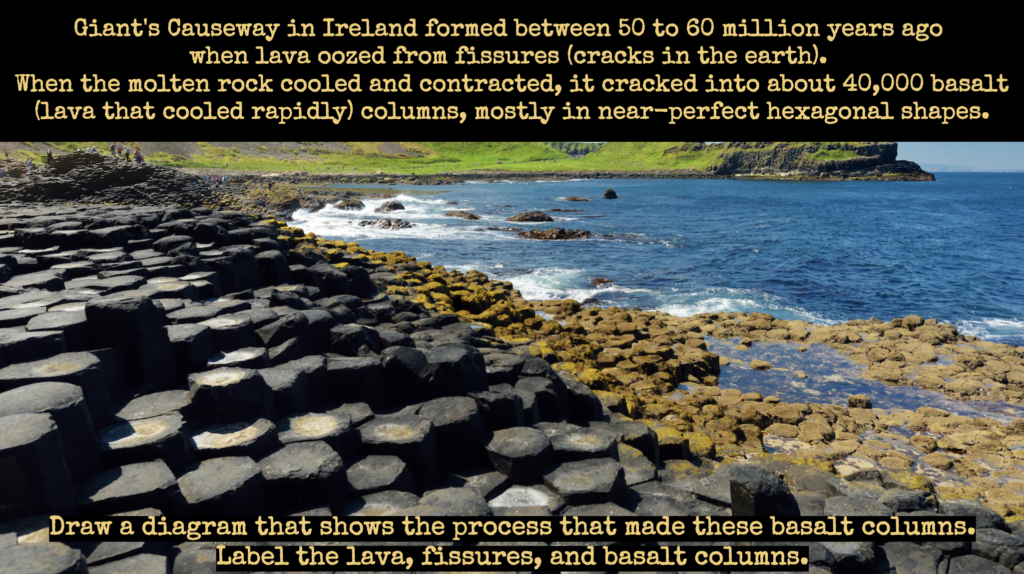
Draw a diagram that shows the process that made the basalt columns.
Label the lava, fissures, and basalt columns.
Common Misconceptions
- The surface of the Earth does not change much.
- The Giant’s Causeway was formed by volcanic eruptions.
- The Giant’s Causeway was formed recently.
Additional Resources
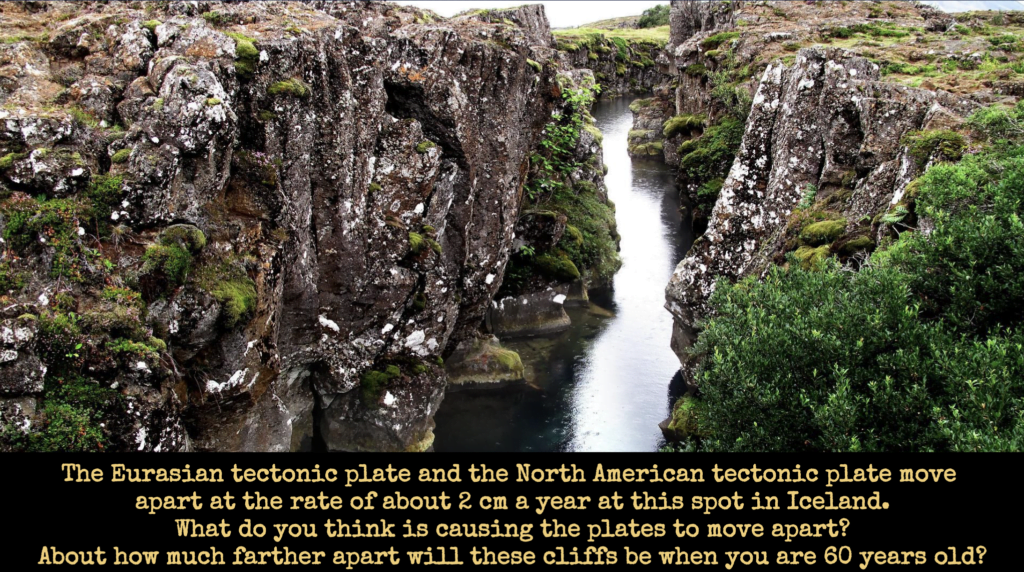
What do you think is causing the plates to move apart?
About how much farther apart will these cliffs be when you are 60 years old?
Common Misconceptions
- The surface of the Earth doesn’t change much.
- Plate tectonics is a recent phenomenon.
- Plate tectonics only occurs on land.
- Plate boundaries never change.
- Plate tectonics is always a slow process.
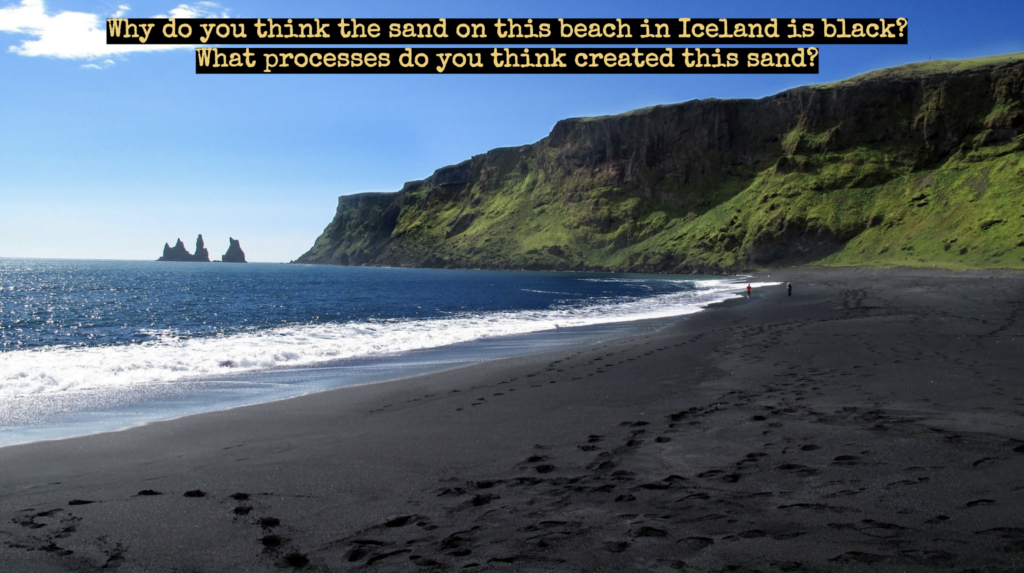
What processes do you think created this sand?
Common Misconceptions
- Volcanoes only exist on land.
- Volcanoes are not active anymore.
- Volcanic eruptions begin at the top of the volcano.
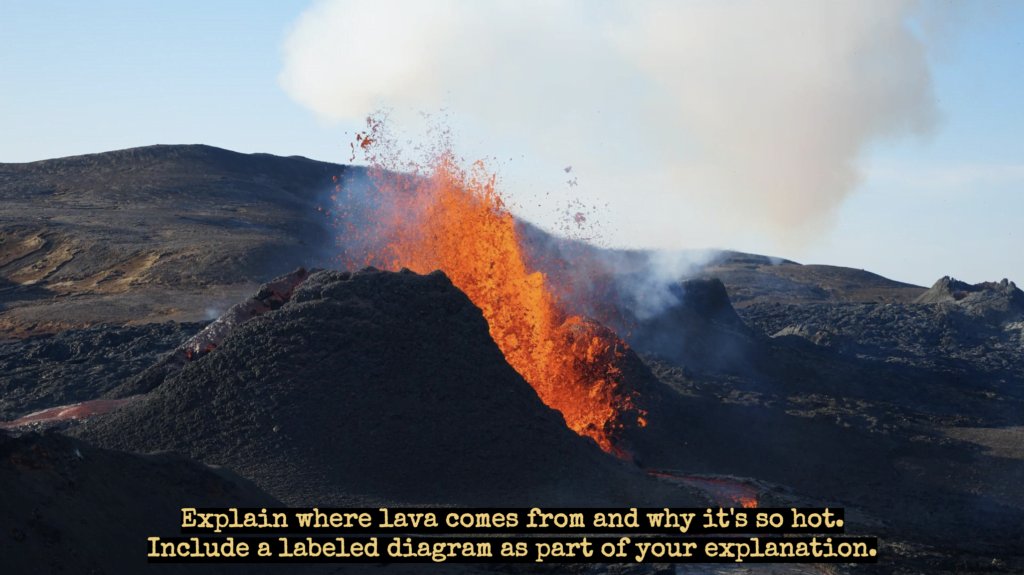
Include a labeled diagram as part of your explanation.
Common Misconceptions
- Volcanoes only exist on land.
- Volcanoes are not active anymore.
- Volcanic eruptions begin at the top of the volcano.


